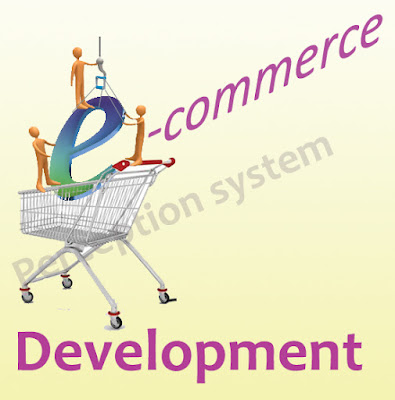Innovation in business
E-commerce is a transaction of buying or selling online. Electronic commerce draws on technologies such as mobile commerce, electronic funds transfer, supply chain management, Internet marketing, online transaction processing, electronic data interchange (EDI), inventory management systems, and automated data collection systems. Modern electronic commerce typically uses the World Wide Web for at least one part of the transaction's life cycle although it may also use other technologies such as e-mail.E-commerce has created a new way of doing business, one that is connecting producers, sellers, and customers via technology in ways that have never been possible before.
 |
| e-commerce growing rapidly |
Definition
Electronics Commerce Commonly written as e-commerce or e-commerce.
It is the Trading in products or services using computer networks, such as the Internet or Online Social Networks.
E-commerce and technologies
Electronic commerce draws on technologies such as
Mobile Commerce
Electronics Funds Transfer
Supply Chain Management
Internet Marketing
Online Transaction Processing
Electronic Data Interchange(EDI)
Inventory Management Systems, and
Automated data Collection Systems.
Backgrounds
- The Most Successful Companies are Embracing the Internet not Merely as another Advertising Medium or Marketing Tool but as a Mechanism for Transforming their Companies and Changing Everything about the way they do Business.
- As these Companies Discover Innovative ways to use the Internet, social media, Computers, and Mobile Devices to Serve their Customers Better and to Connect with their Suppliers.
- some old, established players are being ousted, and new leaders are emerging.
- The Winners are Discovering New Business Opportunities, Improved Ways of Designing Work, and Better ways of Organizing and Operating their Businesses.
- Yet one Lesson that Entrepreneurs Engaged in e-commerce have Learned is that Business Basics Still Apply; Companies Engaged in e-commerce Still have to take care of their Customers and Earn a Profit to Stay in Business.
- In the World of E-commerce, New Business Models Recognize the Power the Internet Gives Customers, whether they buy online or offline.
- In 2017, Online Sales and Internet Activity are Projected to Account for or Influence 60 Percent of Total Retail Sales, or more than $2.16 trillion, in the United States
- The Internet makes pricing more transparent than ever before: With a few mouse clicks or swipes on a smart phone, customers can compare the prices of the same or similar products and services from companies across the globe.
- In the connected economy, the balance of power is shifting to customers who comparison-shop, new business models must recognize this fact.
- Whatever products they may sell—from books and smart phones to cars and flowers—retailers are dealing with customers who are more informed and aware of the price and feature comparisons of the items for which they are shopping.
Factors to consider before launching e-commerce
- The First e-commerce transaction took place on August 11, 1994, when Net Market, a Small Company founded by recent college graduate Daniel Kohn, sold a CD by Sting, Ten Summoner’s Tales, to a student at Swarthmore College for $12.48 plus shipping.
- From these humble beginnings grew a distribution channel that now accounts for $304 billion in annual retail sales.
- Despite the many benefits the Internet offers, however, not every small business owner is ready to embrace e-commerce.
- According to a recent survey by the National Small Business Association, 82 percent of Small business owners in the United States have Web sites, more than two-and-a half times as many that were operating online in 1997.
- However, 28 percent of small businesses with Web sites do not actually engage in e-commerce because their Web sites cannot process customer payments.
- The primary reasons that business owners give for not having a Web site is that they believe that a
- Web site is not necessary for their company (27 percent)
- Creating and maintaining a site is too difficult (19 percent)
- Operating a Web site is too costly (12 percent).
- Like The Room Place, small businesses have been allocating more resources to their e-commerce efforts, investing in developing and updating their Web sites, optimizing their sites to achieve top search engine rankings, and encouraging customers to post reviews of their businesses, products, and services.
Forms
Contemporary electronic commerce involves everything from ordering "digital" content for immediate online consumption, to ordering conventional goods and services, to "meta" services to facilitate other types of electronic commerce.On the institutional level, big corporations and financial institutions use the internet to exchange financial data to facilitate domestic and international business. Data integrity and security are pressing issues for electronic commerce.
Aside from traditional e-Commerce, the terms m-Commerce (mobile commerce) as well (around 2013) t-Commerce have also been used.Courtesy of wikipedia...
No comments:
Post a Comment